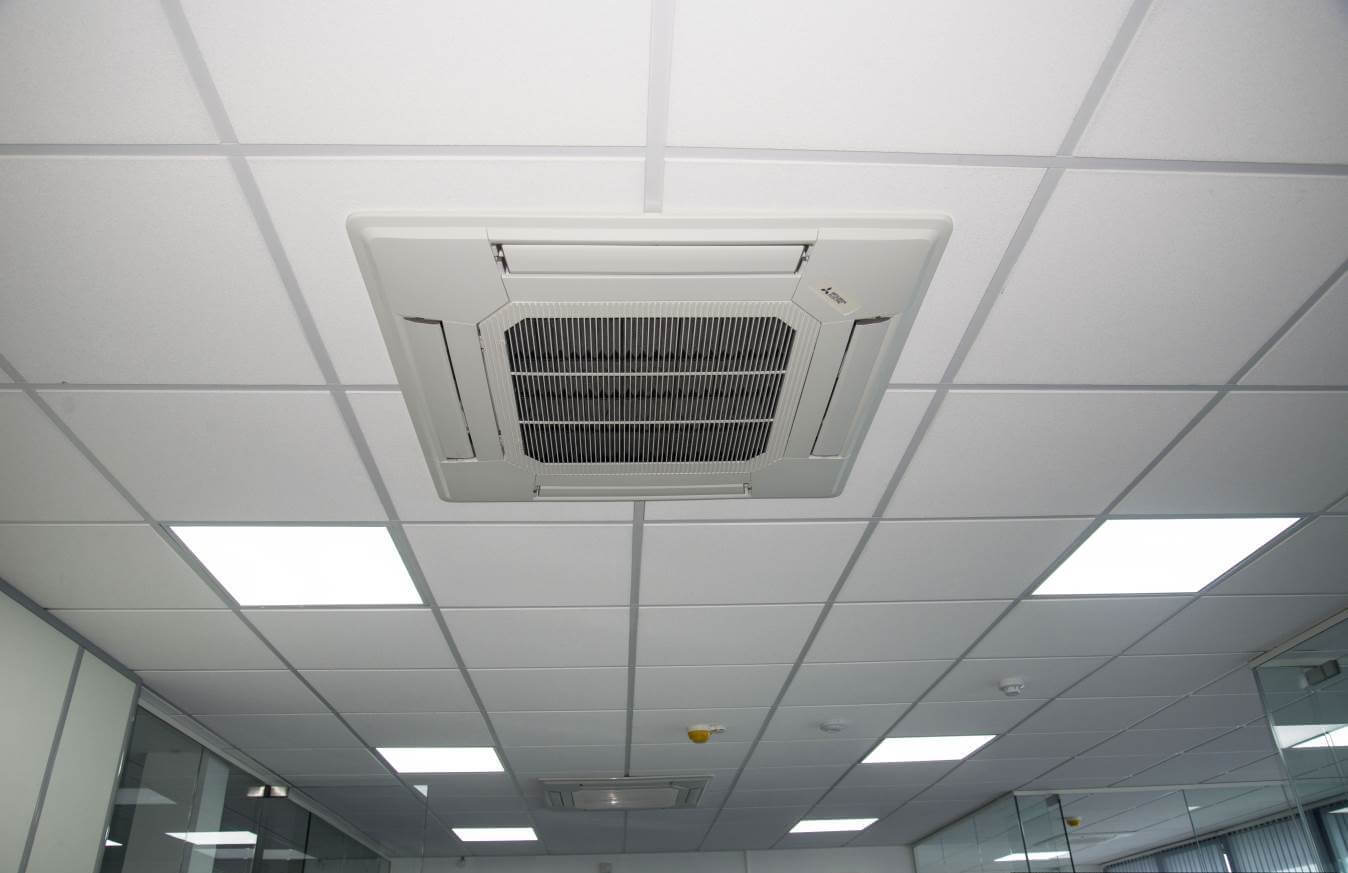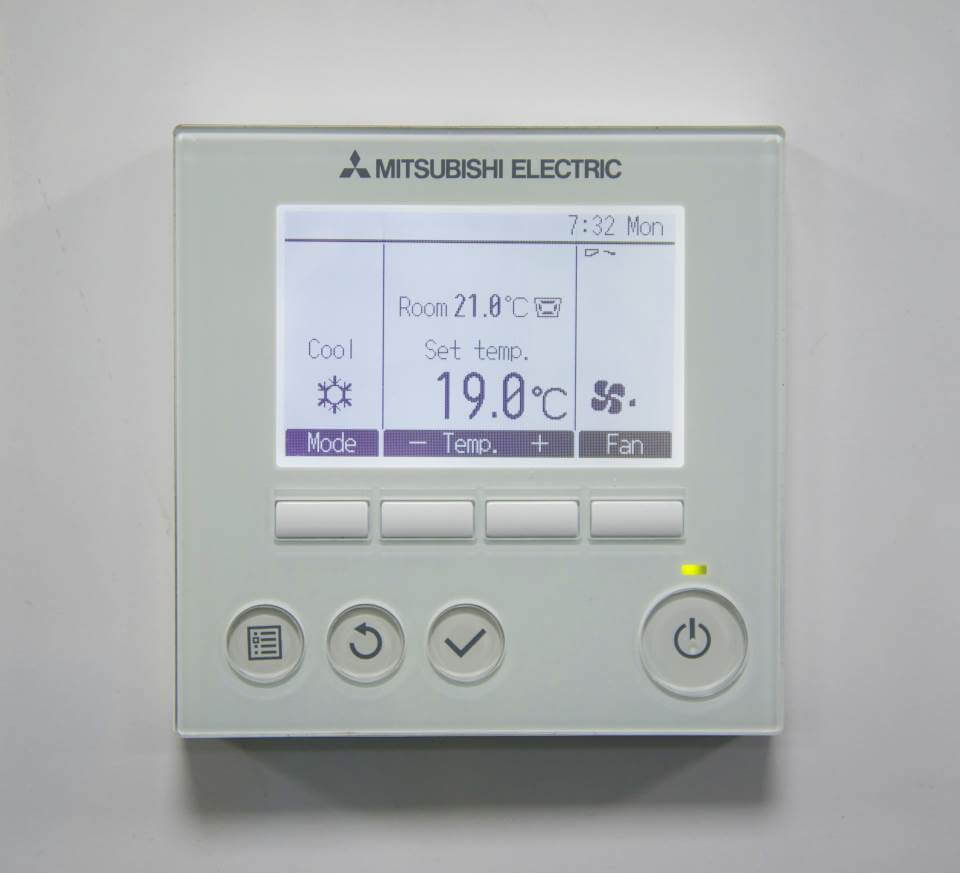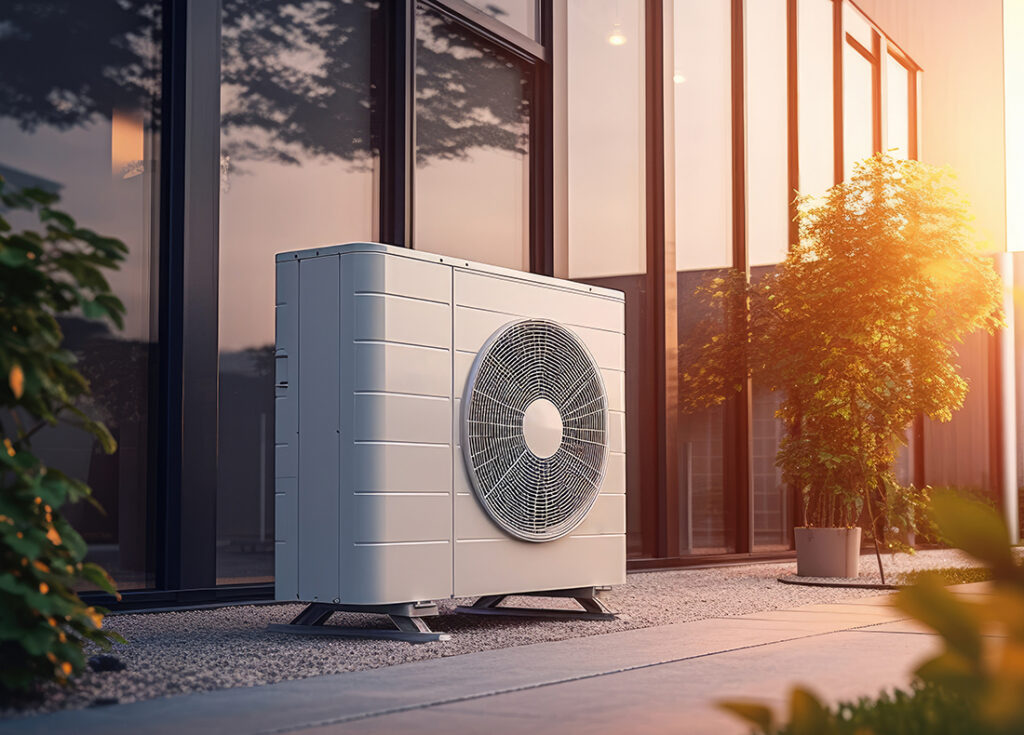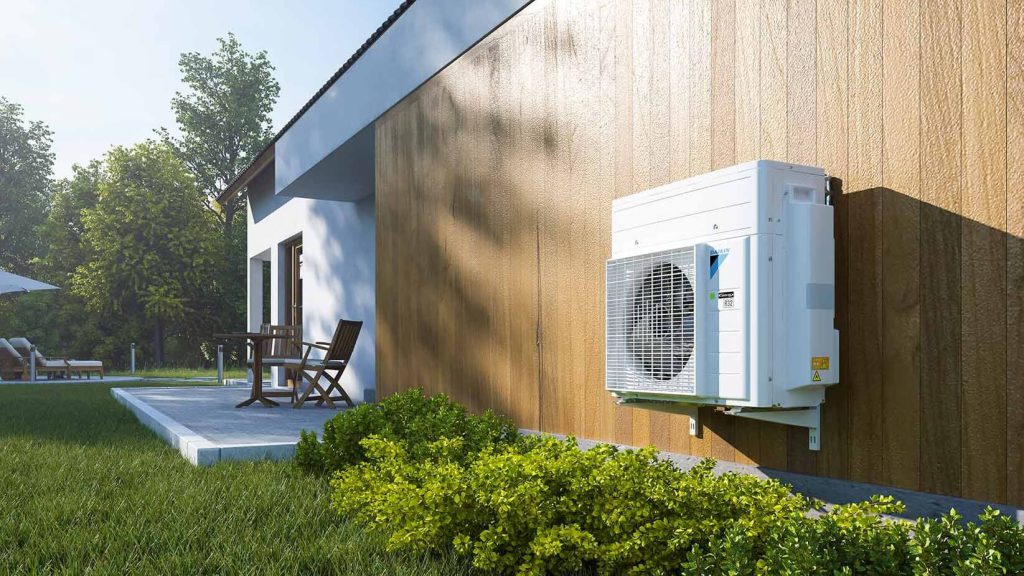What Does Air Conditioning Actually Do? It Just Cools the Air – Doesn’t It?

Estimated reading time 11 minutes
An air conditioning system just cools the air - doesn’t it?
In the high temperatures we’ve been experiencing over the last few weeks we’re sure that having an air conditioning system that does only that and nothing else would be a god-send but is that all an air conditioning system does? In fact the answer is no. There is far more to air conditioning than simply keeping a space cool.
In this article we look at the functions carried out by air conditioning.
Changing States to Beat the Heat
Air conditioning systems work through a process by which chemicals evaporate and condense from liquid to gas and back again. Of course there is a lot more to air conditioning than just the physical law that when a liquid converts to a gas it absorbs heat. So what are the functions of air conditioning: how they work and what they do?
Controlling the Temperature
If asked many people would say an air conditioner “creates” cold air BUT an air conditioner doesn’t actually make cold air instead it removes the heat from warm air, cooling it down and pushing it back out of the system into the room or building.
So, how does your air conditioner remove the heat from the air in your office, restaurant or building?
An air conditioning system works to keep a room or building at a constant, comfortable temperature through refrigeration.
These chemicals evaporate and condense from liquid to gas and back again (in a process known as “phase conversion”) in a closed system of coils. The chemicals transfer the heat from the air inside a building, and push the heat outside the building. This process is repeated over and over again and allows the air conditioning system to maintain the inside of a building at a steady temperature.
The chemicals involved in this process are refrigerants that have a specific property which allows them to change state at relatively low temperatures. By moving the warm inside air over a series of evaporator coils filled with refrigerants. When the warm air moves across these coils the refrigerant absorbs the heat as it changes from liquid to gas. The system then converts the gas back to a liquid by putting the gas under a high pressure in a compressor. This creates unwanted heat which is removed from the system through a set of condenser coils and released to the outside of the building. As the gas cools to a liquid the process starts over again to form a cycle of liquid refrigerant, conversion to gas, heat absorption, cool air release/heat expulsion and then transition back to a liquid.
This cycle continues until the air inside your office or building reaches the temperature you’ve set through the thermostat. When the thermostat detects that the desired room temperature has been met it turns the air conditioning off. When the room temperature starts to rise again the thermostat turns the air conditioning back on again and the AC does its job to bring the room temperature back to the level set and so the cycle goes on.
Advantages of Controlling the Temperature
We know that there is a large body of research which shows that by being able to maintain the temperature in a building can help to improve the performance of staff.
Studies have shown that for around 33% of employees productivity decreases because they are uncomfortable with their office temperature. Only 24% of those surveyed agreed that the temperature in their office was suitable for working all year round. As a consequence as office temperatures rise businesses may see a decrease in output.
Research by Cornell University has shown that the optimal temperature for office productivity is 25°C (77°F). Alan Hedge, professor of design and environmental analysis and director of Cornell’s Human Factors and Ergonomics Laboratory explained “At 77 degrees Fahrenheit, the workers were keyboarding 100 percent of the time with a 10 percent error rate, but at 68 degrees, their keying rate went down to 54 percent of the time with a 25 percent error rate. Temperature is certainly a key variable that can impact performance. We expected that when you cool people down, they work harder and better… We found the exact opposite. When it was cool to colder in the office, people did less work and made more mistakes.”
According to YouGov the average British worker said the ideal office temperature is 21°C but at 28°C it becomes too hot. This finding appears to be backed up by data from Lawrence Berkeley National Laboratory who collected productivity readings and temperature recordings from 24 studies and found that the best temperature to maximise creativity and productivity should be 21°C. Anything over or under this temperature can impact productivity.
Cleaning the Air
You’ll no doubt have come across news items which say that air conditioning can make you ill! In fact the opposite is true. Air conditioning plays a major role in keeping the air clean within a building. Air conditioners filter the air they take in. Without an air conditioning system many people resort to opening windows which can allow pollen and other irritants to find their way into your office or building.
As long as an air conditioner is properly taken care of, filters are cleaned or replaced as required and the system is well maintained then your air conditioner will filter out particulates, dust and germs.
According to Allergy UK around 40% of people in the UK will suffer from allergies at some point in their lives. Many of those allergies come from airborne particles like pollen, mould spores and dust which can cause severe allergic reactions including making eyes stream and noses run or causing rhinitis or sinusitis, and in asthmatics it can cause shortness of breath or a full blown asthma attack. If you’ve ever suffered an allergic reaction you’ll know just how debilitating it can be.
One thing that can help alleviate the symptoms above is air conditioning.
Advantages of Cleaning the Air
Clifford Bassett, MD, founder and medical director of Allergy and Asthma Care of New York and author of The New Allergy Solution states: “If you're someone who has indoor allergies, having A/C could actually help filter out some of the pollen, mould, and pollution that are in the air, which could make your symptoms more tolerable”.
Dr. Mark Aronica, an allergist-immunologist at the Cleveland Clinic says: “For patients with allergies and other underlying respiratory diseases such as COPD/Emphysema, staying indoors with the air conditioning on and the windows closed, reduces exposure to outside pollens and pollutants.”
The Centre for Disease Control (CDC) states air-conditioning is the strongest protective factor against heat-related illness. Exposure to air conditioning for even a few hours a day will reduce the risk for heat-related illness.
This is further backed up by a study by Yale researchers called Adverse Health Effects of Particulate Air Pollution which shows air conditioning can lower the risk of hospitalisation and deaths related to cardiovascular issues.
William Fisk, leader of Lawrence Berkeley National Laboratory’s Indoor Environment Group also explains: “AC can be expected to reduce the risk of heat stroke and heat-related death during heat waves, which are becoming more common with climate change. AC also enables windows to be maintained closed and AC systems usually contain filters that remove particles from the circulated air. With AC and closed windows, indoor concentrations of outdoor air pollutants such as particles, ozone and allergens are decreased.”
Dehumidifying the Air
Just as air conditioning removes the heat from the air, it also removes humidity too. However humidity is moisture and needs to be removed in a different way to removing heat.
As we previously mentioned air conditioning works by passing warm air over a series of evaporator refrigerant-filled coils. When the warm air moves across the evaporator coils it condenses the water vapour in the air and turns into water droplets. The coil then removes and drains it via a condensate array/drain pan. Each and every time warm air is passed over the evaporator coils water is removed from the air – dehumidifying it.
Advantages of Dehumidifying the Air
Humans are very sensitive to humid environments as our skin relies on the air to remove moisture through the process of perspiration. Perspiring is the body's natural way of regulating temperature by allowing it to release heat. Humidity holds heat and makes the air feel clammy. When the air is clammy and filled with moisture it makes it harder for us to keep cool.
If the air is 100% relative humidity then the sweat will not evaporate into the air as the air is already saturated. This leads to us feeling hot and blocks the body’s natural process of cooling down. If on the other hand the humidity is low then our bodies are able to sweat and perspiration is released and evaporates into the air.
People tend to feel most comfortable at a relative humidity of between 30% and 50%.
On top of helping us to feel more comfortable and maintain a regular body temperature dehumidifying the air minimises condensation and makes buildings less hospitable to allergens such as mildew and mould which can affect your health. Moulds can produce allergens, irritants and on occasion, toxic substances. Inhaling or coming into contact with mould spores can cause a variety of allergic reactions, such as sneezing, a runny nose, throat irritation, coughing or wheezing, eye irritation and skin rash. Moulds can also cause asthma attacks.
Air conditioning also reduces/stops odours that can accompany mould and mildew thereby preventing that “musty” or “rotting” smell that mould or mildew produce.
Maintaining Your Air Conditioning System
Clearly an air conditioning system brings with it many advantages including maintaining a comfortable room temperature, removing excess moisture from the air and filtering out irritants that could cause health issues. However your air conditioning will only do these things if it is well maintained. The best way to do this is to schedule regular maintenance by qualified air conditioning specialists.
Planned Preventative Air Conditioning Maintenance
Synecore offer a Planned Preventative Maintenance (PPM) package which covers all UK businesses with commercial air conditioning. Each air conditioning maintenance project is overseen by an experienced project manager who will ensure that your air conditioning system is fully functional, problem free and working efficiently.
PPM is tailor made for each business dependent on size. PPM visits are scheduled throughout the year and each visit entails some or all of the following: a visual inspection of your AC system to determine what if any issues there are, an inspection of the filters to check if there is a build up of dust or dirt and replacement of filters if required, cleaning of the condenser unit (the fan, coils and fins) to ensure there are no obstructions, replacement of coolant lines where deterioration has occurred, checking of electrical connections for damage, lubricating moving parts to minimise friction and wear and tear, checking refrigerant levels to make sure the system can cool the air efficiently and finally testing the system to check it is working at its maximum efficiency.
Should your air conditioning suffer a system breakdown Synecore PPM package customers receive high priority status for any air conditioning breakdowns and repairs. We ensure an engineer will be on site within hours and your equipment will be back up and running as quickly as possible.
Also included in our PPM package is compliancy with F-gas regulations and TM44 certification.
Contact Synecore
Based in Sittingbourne, just outside Maidstone in Kent, Synecore operate throughout Kent, London and the UK. We install the most reliable air conditioning systems from the world’s leading HVAC suppliers including Daikin, Toshiba and Mitsubishi Electric to office developments, hotels, restaurants, retail and large commercial premises. Whether you require single split systems or large multi VRV/VRF air conditioning systems, Synecore can provide you with an efficient and long-lasting HVAC solution.
To find out how we can help get in touch with our head office for more information. Call 01795 509509 or email us at sales@synecore.co.uk.



